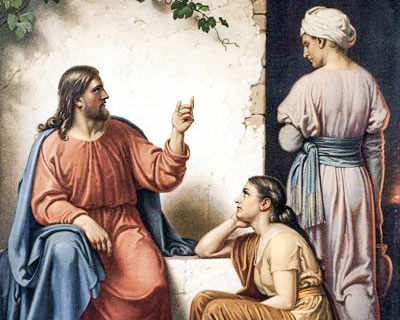
Perhaps the last un-shattered “glass ceiling” is female ordination in the Catholic and Orthodox Churches. Pope Francis recently announced he would establish a commission to investigate the nature of the early Church “deaconess” role.
It should be noted that in the same breath Pope Francis warned against clericalizing the laity, assuming those who serve in the Church must be ordained, and he has previously ruled out priestly ordination of women. What follows is a two-part survey on why the Church has not ordained women to priestly service and what we know about deaconesses.
The Church has tried to remain faithful to God’s revelation. When appointing an old Covenant priesthood, God chose Aaron and males of his household to minister in the meeting tent of the desert and, subsequently, in the Temple of Jerusalem.
It is true that Jesus multiplied bread for the many, but when He used the language of a new Covenant at Passover, He did so with His closest followers. Christ asked that this “new Covenant” be perpetuated in the example of Melchizedek, who used bread and wine, with the kind of servant-model typified by humbly washing feet.
On Easter night, Jesus breathed the Holy Spirit upon those gathered and commissioned them to forgive sins in His name. These key moments were the birth of the Eucharist, holy orders and reconciliation in sacramental, or “living-memory of Christ” form.
It is likely that the Blessed Virgin Mary was present at these sacred moments. However, in the example of Jesus, the Apostles chose Matthias, not Mary, to replace Judas, and Mary did not travel proclaiming and celebrating the sacred mysteries.
Subsequent elaboration on the nature of the priesthood elucidated that when acting sacramentally, saying “this is my Body,” or “I absolve you …” the ordained stands in persona Christi. If a sacrament makes present Christ’s saving action anew, and He came as a male, then only an ordained male can re-present the Lord’s work.
Some argue that when the bread and wine are trans-substantiated, or when the penitent is absolved, it is the resurrected, genderless Christ acting. That would imply, however, that there was no real presence at the Last Supper and the sins Jesus pardoned in the Gospels were not forgiven, since by those points Christ had neither risen nor ascended.
Others say Jesus was restricted by His society’s treatment of women. Yet Jesus elevated the sinful Samaritan woman’s dignity by speaking alone with her in public and He allowed Martha to sit at His feet, then a posture of a student. Female students were unheard of in Jesus’ time.
If Jesus wanted to have female priests, He would have. For these reasons, Pope St. John Paul II taught definitively in 1994 that, being faithful to the revelation of Christ Himself and Apostolic practice, the Church has no authority to ordain women to the priesthood and, therefore to the episcopacy.
Nevertheless the nascent Church leaves us with references to “deaconesses.” What they did and why they disappeared is for another survey.
